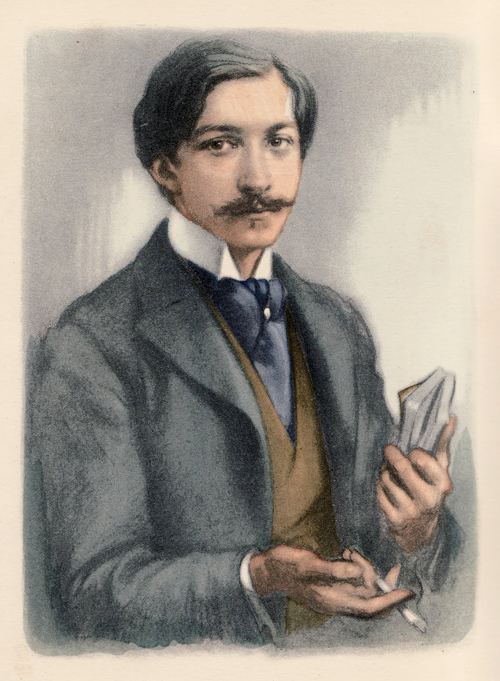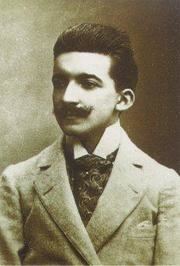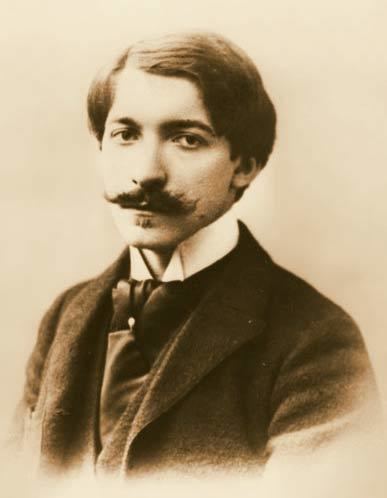Name Pierre Louys | Language French Role Poet Period 1891-1925 | |
 | ||
Born Pierre-Felix Louis10 December 1870Ghent, Belgium ( 1870-12-10 ) Pen name Pierre Chrysis, Peter Lewys, Chibrac Spouse Aline Steenackers (m. 1923) Movies That Obscure Object of Desire, The Devil Is a Woman Children Gilles Louys, Suzanne Louys, Claudine Louys Books The Songs of Bilitis, Aphrodite: mœurs antiques, The Woman and the P, Les aventures du Roi Pa, Pybrac Similar People Claude Debussy, Luis Bunuel, Claude Farrere, Jean‑Claude Carriere, Francis Lai | ||
Pierre Louÿs ([pjɛʁ lu.i(s)], 10 December 1870 – 6 June 1925) was a French poet and writer, most renowned for lesbian and classical themes in some of his writings. He is known as a writer who sought to "express pagan sensuality with stylistic perfection." He was made first a Chevalier and then an Officer of the Légion d'honneur for his contributions to French literature.
Contents
Radio nova le manuel de civilite de pierre louys
Life

Pierre Louÿs was born Pierre Félix Louis on 10 December 1870 in Ghent, Belgium, but moved to France where he would spend the rest of his life. He studied at the École Alsacienne in Paris, and there he developed a close friendship with a future Nobel Prize winner and champion of homosexual rights, André Gide. From 1890 onwards, he began spelling his name as "Louÿs", and pronouncing the final S, as a way of expressing his fondness for classical Greek culture (the letter Y is known in French as i grec or "Greek I"). In the 1890s, he became a friend of the noted Irish dramatist Oscar Wilde, and was the dedicatee of Wilde's Salomé in its original (French) edition. Louÿs enjoyed entree into homosexual circles. Louÿs started writing his first erotic texts at the age of 18, at which point he developed an interest in the Parnassian and Symbolist schools of writing.
Early writings
In 1891, Louÿs helped found a literary review, La Conque, where he proceeded to publish Astarte, an early collection of erotic verse already marked by his distinctive elegance and refinement of style. He followed up in 1894 with another erotic collection in 143 prose poems, Songs of Bilitis (Les Chansons de Bilitis), this time with strong lesbian themes. It was divided into three sections, each representative of a phase of Bilitis's life: Bucolics in Pamphylia, Elegies at Mytilene, and Epigrams in the Isle of Cyprus; dedicated to her were also a short Life of Bilitis and three epitaphs in The Tomb of Bilitis. What made The Songs sensational is Louÿs' claim that the poems were the work of an ancient Greek courtesan and contemporary of Sappho, Bilitis; to himself, Louÿs ascribed the modest role of translator. The pretense did not last very long, and "translator" Louÿs was soon unmasked as Bilitis herself. This did little to tarnish The Songs of Bilitis, however, as it was praised as a fount of elegant sensuality and refined style, even more extraordinary for the author's compassionate portrayal of lesbian (and female in general) sexuality.

Some of the poems were tailored as songs for voice and piano. Louÿs' close friend Claude Debussy composed a musical adaptation Chansons de Bilitis (Lesure Number 90) for voice and piano (1897-1898) in three parts:

Debussy also wrote Six épigraphes antiques in 1914 as piano pieces for four hands, commissioned as preludes to a recital of Louÿs' poems:
In 1955, one of the first lesbian organizations in America called itself Daughters of Bilitis, and to this day Louÿs' Songs continues to be an important work for lesbians.
Later writings
In 1896, Louÿs published his first novel, Aphrodite — Ancient Manners (Aphrodite — mœurs antiques), a depiction of courtesan life in Alexandria. It is considered a mixture of both literary excess and refinement, and, numbering at 350,000 copies, was the best selling work by any living French author in his day.
Louÿs went on to publish Les Aventures du roi Pausole (The Adventures of King Pausolus) in 1901, Pervigilium Mortis in 1916, both of them libertine compositions, and Manuel de civilité pour les petites filles à l'usage des maisons d'éducation, written in 1917 and published posthumously and anonymously in 1927.
Inspired by Abel Lefranc's arguments for the Derbyite theory of Shakespeare authorship, Louÿs proposed in 1919 that the works of Moliére were actually written by Corneille.
Even while on his deathbed, Pierre Louÿs continued to write delicately obscene verses.
Reception
Louÿs was named Chevalier de la Légion d'honneur on 31 December 1909 for his contribution to French literature as a man of letters. He was promoted to Officier de la Légion d'honneur on 14 January 1922.
Illustrators
Many erotic artists have illustrated Louÿs's writings. Some of the most renowned have been Georges Barbier, Paul-Émile Bécat, Antoine Calbet, Beresford Egan, Foujita, Louis Icart, Joseph Kuhn-Régnier, Georges Lepape, Mariette Lydis, Milo Manara, André Edouard Marty, Pascal Pia, Georges Pichard, Rojan, Marcel Vertès, and Édouard Zier.
The best known illustrations for The Songs of Bilitis were done by Willy Pogany in art deco style for a publication privately circulated by Macy-Masius, New York, in 1926.
Quotes
List of works
Published posthumously:
For recent limited editions of further writings by Pierre Louÿs, see the bibliography by Patrick J. Kearney
